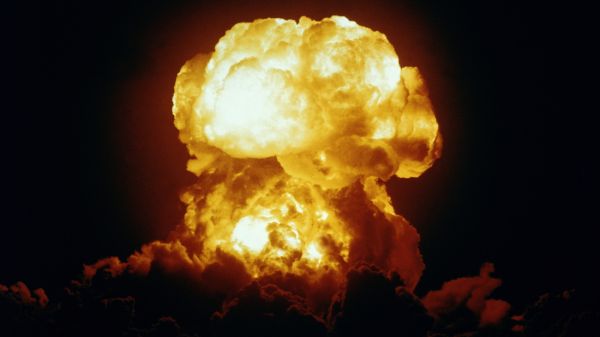Throughout the past century, warfare has evolved in fascinating and frightening ways. Firearms have gotten bigger and more lethal, planes, and boats have become even more integral parts of war (though it has been some time since the United States’ last aircraft carrier sunk at war), and, perhaps most worrisome of all, explosive technology has advanced in ways unimaginable. One variety of bomb that has grown especially prevalent in recent decades, most recently thanks to its use in Russia’s invasion of Ukraine, is the thermobaric or vacuum bomb.
Advertisement
With a history dating back to the early to mid-20th century, vacuum bombs have devastated battlefields across the world. Thermobaric bombs work with two explosive charges, with the first one going off upon impact and creating a mixed cloud of air and fuel. The second then detonates to light the mixture, generating a wide-reaching fireball and pulling surrounding oxygen to cause further destruction — hence the vacuum bomb moniker. They’re often used in highly populated areas to devastate structures and humans alike.
There’s no denying that vacuum bombs are atrocious weapons of war and, unfortunately, will likely continue to take lives for years to come. One might wonder, how do they compare to much more widely-known and feared nuclear weaponry?
Advertisement
Though dangerous, thermobaric weapons aren’t the same as nuclear
Nuclear bombs — not to be confused with thermonuclear weapons — were infamously created in the 1940s during World War II, and like virtually all other forms of warfare technology, they have gone through numerous changes over the years. Though they haven’t been used in war situations since the ’40s, countries around the world have tested and stockpiled them all the same, threatening to use them at a moment’s notice when international tensions have run high. Internally, these bombs are powered by the splitting of a heavy atomic nucleus into two lighter nuclei, a system known as nuclear fission. While devastating in their own right, vacuum bombs aren’t quite on the same level.
Advertisement
The biggest discrepancy between the two bomb types is their yield, or the energy released upon detonation. The highest thermobaric weapon, Russia’s “Father of All Bombs,” displayed a yield of 44 tons when it was tested in 2007. Meanwhile, current nuclear bombs in the United States, for example, have boasted yields between 50,000 tons and 1.2 megatons. Some of the most powerful nuclear bombs ever detonated managed to dwarf those numbers. Vacuum bombs also last longer than their nuclear counterparts in terms of sustained firepower. Unlike thermobaric explosions, though, nuclear ones will create fallout in the aftermath, making detonation sites uninhabitable and leaving living entities in the area with long-lasting ailments.
Advertisement
Despite them being in leagues of their own in terms of how their explosions are created, how they unfold, and the damage caused, nuclear and thermobaric weapons are downright evil. It’s truly sobering the technological advancements warfare can motivate.








